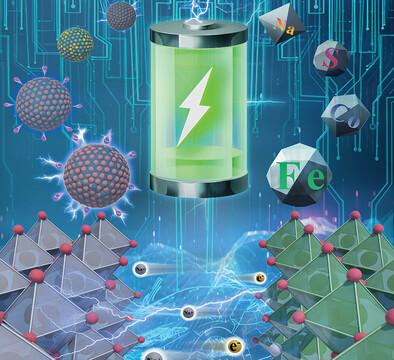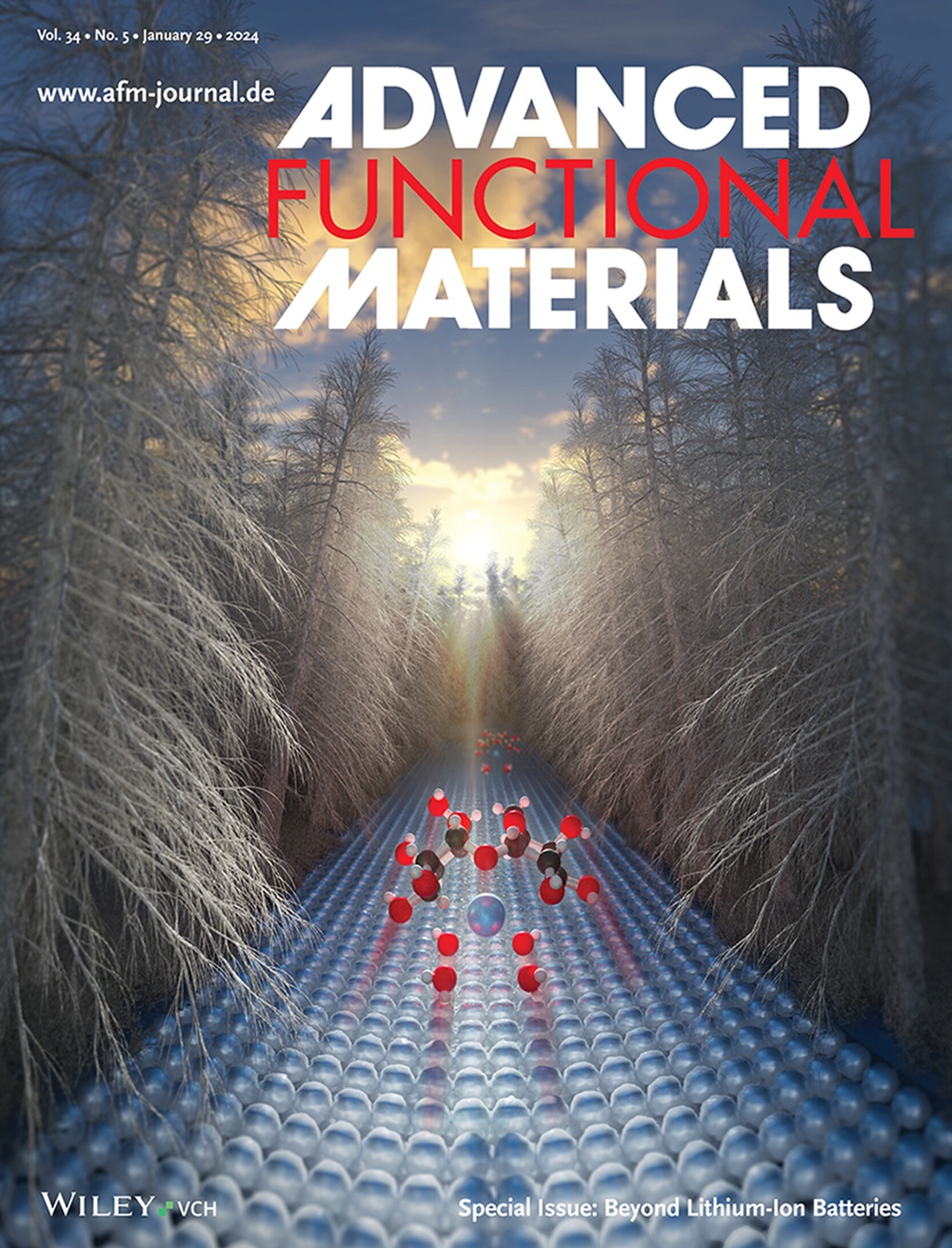Heterojunction Vacancies-Promoted High Sodium Storage Capacity and Fast Reaction Kinetics of the Anodes for Ultra-High Performance Sodium-Ion Batteries
IF 18.5
1区 材料科学
Q1 CHEMISTRY, MULTIDISCIPLINARY
引用次数: 0
Abstract
Transition metal sulfides as anode materials for sodium-ion batteries (SIBs) have the advantage of high capacity. However, their cycle-life and rate performance at ultra-high current density is still a thorny issue that limit the applicability of these materials. In this paper, the carbon-embedded heterojunction with sulfur-vacancies regulated by ultrafine bimetallic sulfides (vacancy-CoS2/FeS2@C) with robust interfacial C-S-Co/Fe chemical bonds is successfully synthesized and explored as an anode material for sodium-ion battery. By changing the ratio of two metal cations, the concentration of anion sulfur vacancies can be in-situ adjusted without additional post-treatment. The as-prepared vacancy-CoS2/FeS2@C anode material offers ultrahigh rate performance (285.1 mAh g−1 at 200 A g−1), and excellent long-cycle stability (389.2 mAh g−1 at 40 A g−1 after 10000 cycles), outperforming all reported transition metal sulfides-based anode materials for SIBs. Both in-situ and ex-situ characterizations provide strong evidence for the evolution mechanism of the phases and stable solid-electrolyte interface (SEI) on the vacancy-CoS2/FeS2@C surface. The density functional theory calculations show that constructing heterojunction with reasonable concentration of vacancies can significantly increase the anode electronic conductivity. Notably, the assembled vacancy-CoS2/FeS2@C//Na3V2(PO4)3/C full-cell shows a capacity of 226.2 mAh g−1 after 400 cycles at 2.0 A g−1, confirming this material's practicability.

异质结空位促进超高性能钠离子电池阳极的高钠储存能力和快速反应动力学
过渡金属硫化物作为钠离子电池(SIB)的负极材料具有高容量的优点。然而,它们在超高电流密度下的循环寿命和速率性能仍然是一个棘手的问题,限制了这些材料的适用性。本文成功合成了由超细双金属硫化物调节硫空位的嵌碳异质结(空位-CoS2/FeS2@C),并将其作为钠离子电池的负极材料进行了探索。通过改变两种金属阳离子的比例,可以原位调节阴离子硫空位的浓度,而无需额外的后处理。制备的空位-CoS2/FeS2@C 负极材料具有超高的速率性能(200 A g-1 时为 285.1 mAh g-1)和出色的长周期稳定性(10000 次循环后,40 A g-1 时为 389.2 mAh g-1),优于所有已报道的基于过渡金属硫化物的 SIB 负极材料。原位和非原位表征为空位-CoS2/FeS2@C 表面的相和稳定的固体-电解质界面(SEI)的演化机制提供了有力的证据。密度泛函理论计算表明,构建具有合理空位浓度的异质结可以显著提高阳极的电子电导率。值得注意的是,组装好的空位-CoS2/FeS2@C//Na3V2(PO4)3/C 全电池在 2.0 A g-1 的条件下循环 400 次后显示出 226.2 mAh g-1 的容量,证实了这种材料的实用性。
本文章由计算机程序翻译,如有差异,请以英文原文为准。
求助全文
约1分钟内获得全文
求助全文
来源期刊

Advanced Functional Materials
工程技术-材料科学:综合
CiteScore
29.50
自引率
4.20%
发文量
2086
审稿时长
2.1 months
期刊介绍:
Firmly established as a top-tier materials science journal, Advanced Functional Materials reports breakthrough research in all aspects of materials science, including nanotechnology, chemistry, physics, and biology every week.
Advanced Functional Materials is known for its rapid and fair peer review, quality content, and high impact, making it the first choice of the international materials science community.
 求助内容:
求助内容: 应助结果提醒方式:
应助结果提醒方式:


